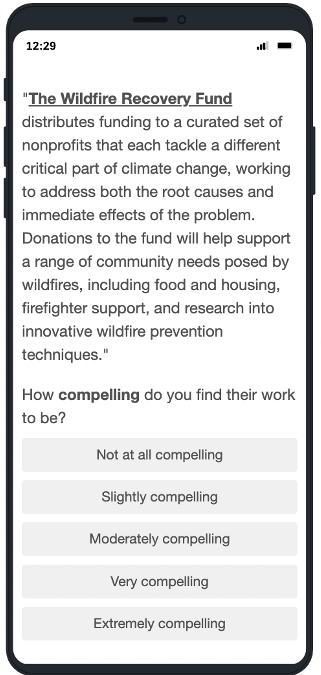When most people think about the work nonprofits do, they think about direct-service work—providing food or offering low-cost healthcare. But work like this is only part of what the wide world of nonprofits can accomplish, and this limited view of their “typical” work often means that important, deserving organizations miss out on the resources they need. Some of those nonprofits that miss out are those that do “systems change,” rather than providing goods or services. Systems change involves less tangible activities, like advocacy, research, and coalition building.
Systems-change work may be neglected by donors because it is more abstract and harder to conceptualize than the more concrete examples offered by direct service. And in fact, across interviews with individual donors, philanthropic advisors, and program officers at institutional funders, we have heard that funders are often confused by and uninterested in giving to anything other than direct services.
So the question is, how can nonprofit fundraisers, philanthropic intermediaries, and others in the field encourage donors to support systems-change work? If the concept feels ambiguous and jargony to everyday, small-dollar donors, then these donors may not be compelled by the fundraising and outreach efforts of worthy systems-change organizations. Our team aimed to determine whether this problem truly exists: Do everyday donors prefer direct-service organizations over those that take a systems-change approach? And, as a potential solution, would bundling both options together into a combined fund be compelling to prospective donors? Ultimately, this research helps us answer larger questions about how generosity can best translate to material, equitable improvements in the lives of people with the least.
Donors give more to direct-service organizations
We recruited 457 participants online to take a survey about charitable giving. Participants completed a few initial questions about their existing giving habits, and then were asked to evaluate a series of donation opportunities. Participants were asked to rate one opportunity—randomly chosen to be either a direct-service nonprofit, a systems-change nonprofit, or a pooled fund that contributed to both direct-service and systems-change work—across a series of measures:
- How compelling do you find their work to be?
- How trustworthy do you think they are?
- How effective do you think they are?
- How moved are you to support them?
- How likely would you be to donate to them?
- Now, imagine you won $100 in a raffle. You can donate a portion of your $100 winnings to this cause. How much would you like to donate?
Participants were also shown a series of paired giving opportunities—a direct-service vs. a systems-change nonprofit, a systems-change nonprofit vs. a pooled fund, and a pooled fund vs. a direct-service nonprofit—and asked to choose between them.
Regardless of whether they were evaluating a single giving opportunity in a vacuum or comparing one against another, participants preferred direct-service nonprofits over systems-change nonprofits. They believed direct services to be more compelling, trustworthy, and effective, and they felt more emotionally motivated to support these nonprofits. They were also more likely to donate to direct-service nonprofits compared to systems-change organizations.
These results indicate that donors do indeed prefer and support direct-service organizations over systems-change organizations. In fact, participants gave 29% more to direct-service nonprofits than systems-change nonprofits when considering them individually, and, when comparing them with one another, 61% of people said they were more likely to give to direct service. But it wasn’t all doom and gloom for systems change. Pooled funds, described to participants as combining systems-change and direct-service approaches, performed nearly as well as direct-service nonprofits. In fact, across most measures, the difference between how direct-service nonprofits and pooled funds were evaluated was miniscule, and statistically insignificant.
How to encourage donations to systems change
This finding suggests that bundling direct-service work alongside systems-change programs may make those programs more appealing to donors, to the point that the combination may receive as much support as direct service on its own. This could be implemented by bundling nonprofits together, as donor advisors, giving platforms, or philanthropic intermediaries can do when presenting donation opportunities to prospective funders. But it can also be achieved by changing the way an organization’s work is described. For instance, a fundraiser looking to drum up small-dollar donations for a systems-change nonprofit could highlight the direct-service elements of the nonprofit’s approach alongside their systems-change work.
While boosting donations to systems change by pairing it with something more immediately appealing to donors, like direct service, seems likely to be a promising fundraising tactic, this is something of an unsatisfactory long-term solution. Those who hope to drive long-term solutions to social problems by changing the way social systems operate may long for a more universal and permanent means of encouraging people to support systems change. Ultimately, such an effort likely calls for a long-term investment in winning hearts and minds.
Convincing people of the merits of systems-change work, especially in pursuit of a more equitable society, would mean changing attitudes and beliefs in the long run—and the problem of identifying the best and most persuasive approaches is not one with clear answers, and it would be a fertile ground for future research. In the near term, the bundling and messaging approaches described above may at least provide advocates and fundraisers with a viable path toward increasing funding for crucial systems-change work.




